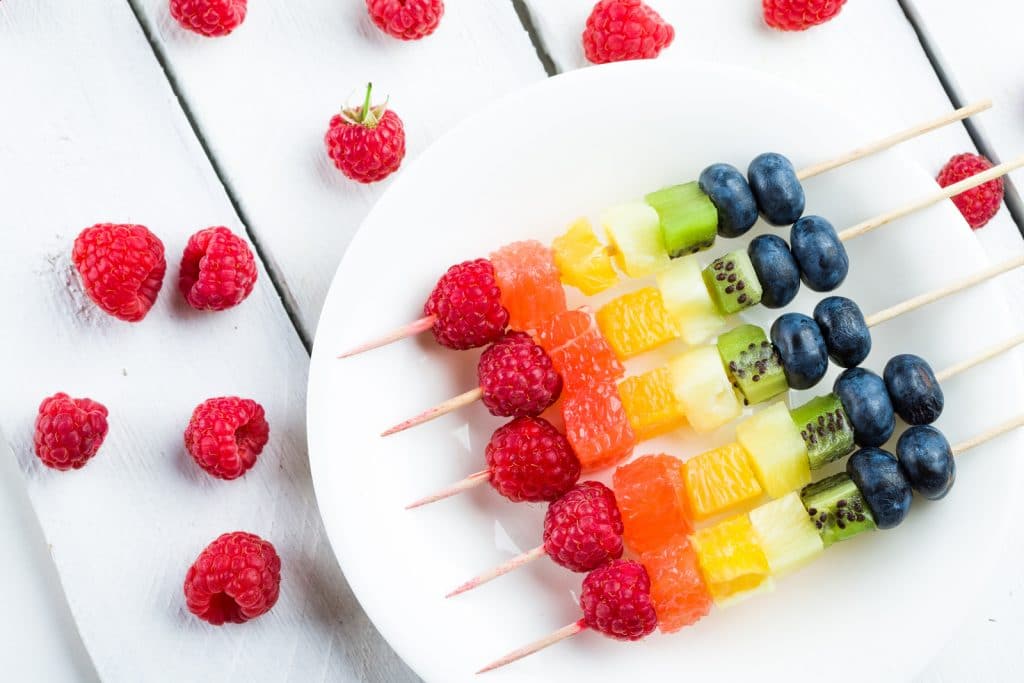[Article updated on 19/09/2023]
Even if nature offers us them all year round, the return of sunny days also signals the return of lots of fresh and varied fruits and vegetables to put on our plates. To allow you to benefit from all their benefits, varying the colors is a very good way to vary the different sources of antioxidants.
Antioxidants: what are they?
An antioxidant is an agent that prevents or slows oxidation by neutralizing free radicals. They serve to fight against oxidative stress responsible for cellular aging. The antioxidant power of a food is measured by the ORAC (Oxygen Radical Absorbance Capacity) index. However, foods that have a high ORAC index are, for the most part, fruits and vegetables.
Why do we need to consume antioxidants?
There are numerous sources of free radicals in our environment: stress, tobacco, alcohol, environmental pollution, intense exposure to the sun, overly intensive sport, etc.
Our body is therefore constantly attacked by different sources of free radicals. When there is an excess of free radicals, our immune system finds itself overwhelmed. The attacks reach the membranes of our cells, proteins and DNA. This causes damage to our cells, their premature death and promotes the appearance of certain diseases. The consequences are a more sensitive immune system, premature aging and an increased risk of cancer.
Antioxidants fight against these free radicals and therefore limit their effects.
Some examples of antioxidants
Antioxidants can be:
Vitamins :
- Vitamin A: otherwise called retinol, it is one of the fat-soluble vitamins essential to the body. In the plant world, it is found in the form of beta carotene. It is mainly found in orange fruits and vegetables such as carrots, sweet potatoes, pumpkin…as well as leafy green vegetables such as spinach, green cabbage…
- Vitamin C: also called ascorbic acid, it is a water-soluble vitamin sensitive to heat and light. It is therefore necessary to favor gentle cooking at low temperature to preserve it. It is mainly present in citrus fruits, peppers, tomatoes, kiwis, strawberries and broccoli.
- Vitamin E: fat-soluble vitamin, it is also called tocopherol. It acts synergistically with other antioxidant nutrients such as vitamin C, vitamin A and selenium. Green fruits and vegetables contain it such as kiwi, avocado, spinach, broccoli. However, the richest sources are oils and oleaginous fruits (almonds, hazelnuts, walnuts, etc.), hence the interest in integrating them into the diet.
Minerals or trace elements:
- zinc: its absorption is higher in products of animal origin, hence the interest in consuming foods such as meat, eggs, fish or milk. Various vegetables can supplement the intake.
- selenium: it is part of the composition of several antioxidant enzymes. Here too, it is foods of animal origin that contain the most and at the same time, certain plants supplement the intake such as peppers and green cabbage.
Polyphenols
Very present in the plant world, in nature, one of their roles is to defend the plant against external attacks (UV, fungi, diseases, etc.) and this is what makes them beneficial for our body. They are mainly found in fruits and different color means different polyphenols. For example, flavonoids make up an important part of polyphenols. These are pigments that give their color to flowers and sometimes leaves of plants. They can be yellow, red, blue or purple. Red fruits, apples, grapes or even spinach and broccoli are particularly rich.
To stock up on antioxidants: eat colorfully!
You understand, by varying the color of your fruits and vegetables throughout the day, you will have a simple way that will allow you to vary the different antioxidants:
- White : garlic, cauliflower, leek…
- Red-pink : cherries, strawberries, tomatoes, red onion…
- Blue-purple : black grapes, eggplant, blueberries…
- Yellow orange : orange, lemon, carrot, apricot…
- Green : broccoli, zucchini, green apple…
Choose raw, seasonal and local fruits and vegetables. Frozen natural fruits and vegetables and steamed, wok or stewed cooking also preserve a maximum of antioxidants.
2 recipes to add color to your plate
Fruit Skewers :
A quick and easy way to stock up on a variety of colors and which can be served both as a dessert and as a snack.
- For 4 people, choose 500 g of seasonal fruits of different colors. For example: in summer: peach, strawberries and pears. In winter: orange, kiwi and apple.
- Peel, pit and cut your fruit. Assemble them on a skewer.
- Sprinkle them with lemon juice to prevent them from blackening.
Winter salad with cabbage, apple and orange:
In winter, our immune system is often put to the test. This colorful salad is a good way to stock up on antioxidants.
For 8 people, take ½ white cabbage, 2 oranges, 1 white onion and 2 apples. Complete with 80 g of Gruyère.
- Wash and slice the cabbage into thin strips. Peel and slice the onion.
- Peel the oranges and apples and cut them into small cubes. Cut the cheese into cubes.
- For the vinaigrette: mix 2 tablespoons of olive oil, 2 tablespoons of virgin walnut oil and 2 tablespoons of the vinegar of your choice. Add 1 tablespoon of whole-grain mustard. Season with pepper and salt to your liking.
What about food supplements?
It is always preferable to favor sources that are naturally present in the diet because your body will know how to assimilate them better. In addition, it reduces the risk of overdose.
If you feel the need to take one or more nutritional supplements, it is better to talk to your doctor or pharmacist beforehand.


